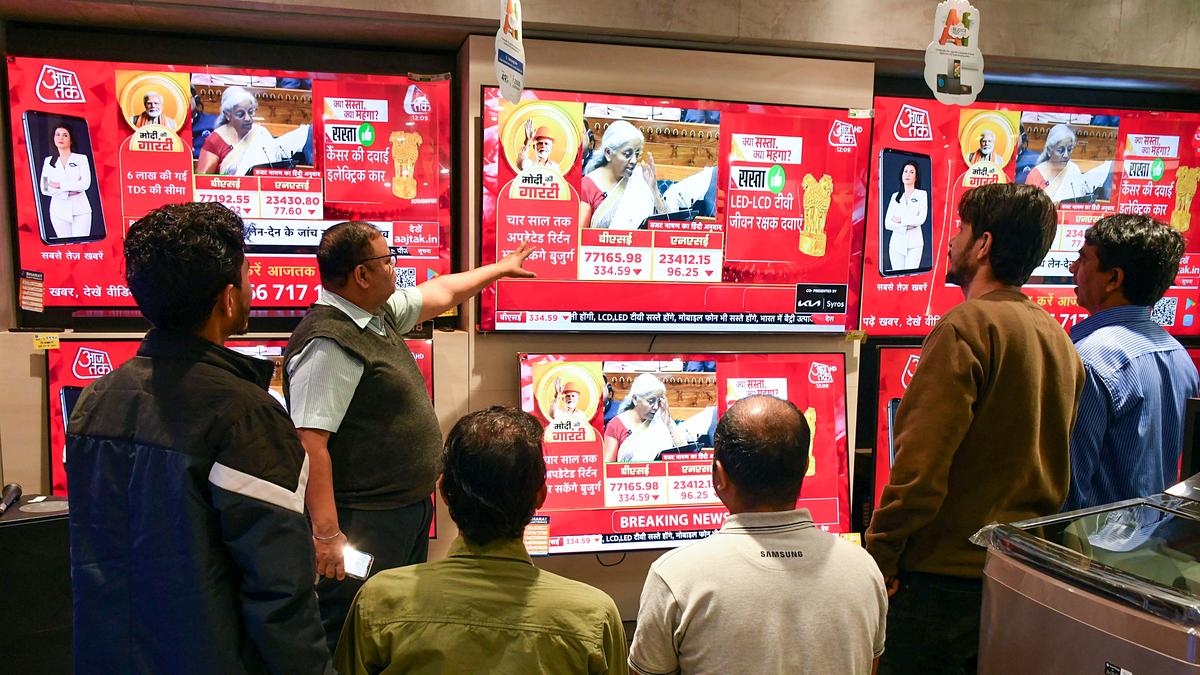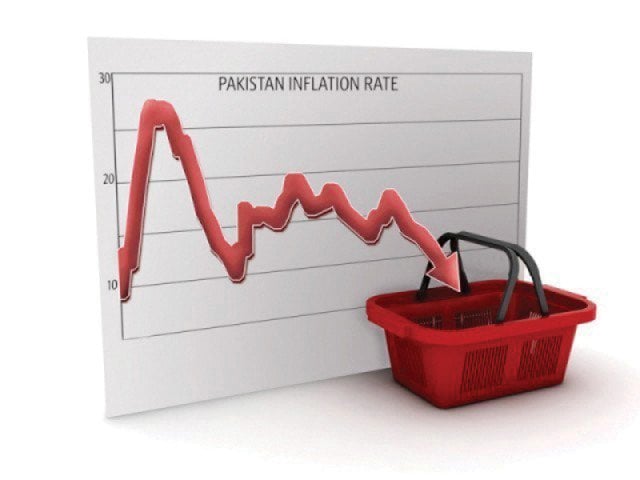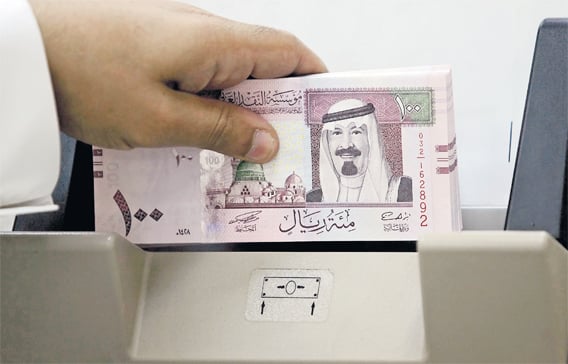‘The Budget’s policy announcements and fiscal plans need closer scrutiny’
| Photo Credit: ANI
The Union Finance Minister, Nirmala Sitharaman’s presentation of the Union Budget on Saturday, February 1, was against the backdrop of pressing macroeconomic challenges — persistently high taxes and unemployment squeezing the middle-income class, subdued private investment, mounting external vulnerabilities that threaten to derail the growth story, and a looming fiscal overhang. While the Finance Minister laid out an ambitious road map for Viksit Bharat, spanning agriculture, manufacturing, micro, small and medium enterprises (MSME), social welfare, and infrastructure, the Budget’s policy announcements and fiscal plans need closer scrutiny.
Targets that raise questions
First, the fiscal consolidation target of 4.4% of GDP in FY26 is a key highlight of the Budget. However, achieving this target hinges on ambitious revenue projections, including a 11.2% growth in total tax revenues and a 14.4% increase in income tax revenues compared to FY25 estimates. These assumptions appear overly optimistic given the significant tax cuts announced in the Budget and the prevailing economic headwinds such as softening domestic consumption and weakening external demand. Much will also depend on the success of the second asset monetisation plan (2025-30), announced in the Budget. The underperformance of the previous asset monetisation programme raises valid concerns. Furthermore, the estimated ₹11.54 lakh crore in net market borrowings risks crowding out private capital at a critical juncture when credit demand remains tepid. Achieving the ambitious revenue targets will require improved tax buoyancy, more efficient tax administration, and realistic asset monetisation strategies to ensure that the fiscal consolidation plan remains on track.
Second, the revisions in personal income-tax rates and slabs under the new tax regime, exempting incomes up to ₹12 lakh from tax (after factoring in the rebate benefit), and significantly reducing tax liabilities across various income brackets, offer welcome relief to middle-income taxpayers.
However, while these changes are likely to boost disposable income, they shall come at a cost — of ₹1 lakh crore in foregone direct tax revenue, which, in turn, could constrain the government’s ability to fund critical developmental initiatives. The tax-base erosion also comes when household savings have shown a structural decline over the past decade, dropping to 18.4% of GDP in FY23 (Economic Survey 2024-25). This raises pressing questions about the long-term sustainability of these tax cuts, particularly when public investments in infrastructure and social welfare remain critical to drive inclusive economic growth.
Third, on the manufacturing front, the Budget reiterates India’s ambition to emerge as a global manufacturing powerhouse. The Economic Survey 2024-25 flagged India’s underperformance in manufacturing, which accounts for a mere 17% of GDP. While production-linked incentives (PLIs) have shown moderate success in sectors such as electronics, their scalability and long-term impact remain uncertain. In that light, the Budget announcements on enhanced credit facilities for MSMEs and the launch of a National Manufacturing Mission aimed at improving ease of doing business, to foster a future-ready workforce, and promote clean-tech manufacturing, are important steps. The revision of MSME classification criteria — increasing investment limits by 2.5x and doubling turnover thresholds— may improve scale economies. However, the measures fall short of addressing core competitiveness issues such as regulatory inefficiencies, infrastructure gaps, and low innovation capacity. The absence of concrete measures to boost industrial research and development — currently at a dismal 0.64% of GDP — undermines India’s ability to compete with innovation-driven economies such as China and Germany. While the Budget’s focus on manufacturing is a step in the right direction, achieving global competitiveness will require deeper structural reforms and sustained investment in innovation and infrastructure.
The gaps remain in agriculture
Fourth, agriculture, a key pillar of the economy, received significant attention through initiatives such as the Prime Minister Dhan-Dhaanya Krishi Yojana and the National Mission on High-Yielding Seeds. These measures are with the aim of enhancing productivity and climate resilience, which are critical for food security. The increase in the Kisan Credit Card (KCC) loan limit from ₹3 lakh to ₹5 lakh, along with targeted interventions in 100 low-productivity districts, signals a strategic pivot from blanket subsidies to precision support, empowering farmers with greater financial flexibility. However, the measures fall short of addressing systemic inefficiencies in agricultural markets. The Budget lays an emphasis on credit enhancements, yet the focus on short-term loans perpetuates the dependency of farmers on debt without addressing the issues of price volatility or market access. Moreover, the absence of concrete measures to promote agricultural exports — particularly as India eyes leadership in millets and natural farming — represents a missed opportunity.
Fifth, while the Budget introduces some promising measures for the external sector, significant gaps remain unaddressed. Services exports, particularly in IT and business process outsourcing, continue to grow at a robust 10.5% CAGR, but budgetary efforts to diversify the export portfolio remain insufficient. Trade facilitation initiatives such as Bharat Trade Net (BTN) and export credit support for MSMEs, which were announced in the Budget, are positive steps but lack the scale required to tackle India’s persistent trade deficits. Moreover, the challenges posed by the depreciation of the rupee and declining forex reserves require a more ambitious export strategy. The fiscal push to value-added sectors such as pharmaceuticals, electronics, renewable energy, and high-value agricultural products could have strengthened India’s position in global supply chains and enhanced export competitiveness.
Not a transformative push
Finally, while the Budget signals intent on climate action and clean energy, its financial commitments reveal a cautious, incremental approach rather than a transformative push. The Budget’s focus on supply-chain resilience — through incentives for lithium-ion battery recycling, duty exemptions on critical minerals, and support for domestic solar photovoltaic and battery manufacturing — is a pragmatic move to reduce import dependence. However, without a parallel investment in grid modernisation, energy storage, and industrial decarbonisation, the transition to a low-carbon economy will remain fragmented.
The Budget’s fiscal outlays will eventually be judged by how effectively they address the fundamental trade-offs of Indian growth: how to unleash private enterprise while ensuring inclusive development; how to boost consumption without compromising savings, and how to accelerate growth while maintaining macroeconomic stability. Ultimately, the credibility of execution and the government’s willingness to course-correct where necessary will matter.
Amarendu Nandy is an Assistant Professor (Economics Area) at the Indian Institute of Management (IIM) Ranchi. The views expressed are personal
Published – February 03, 2025 12:16 am IST





